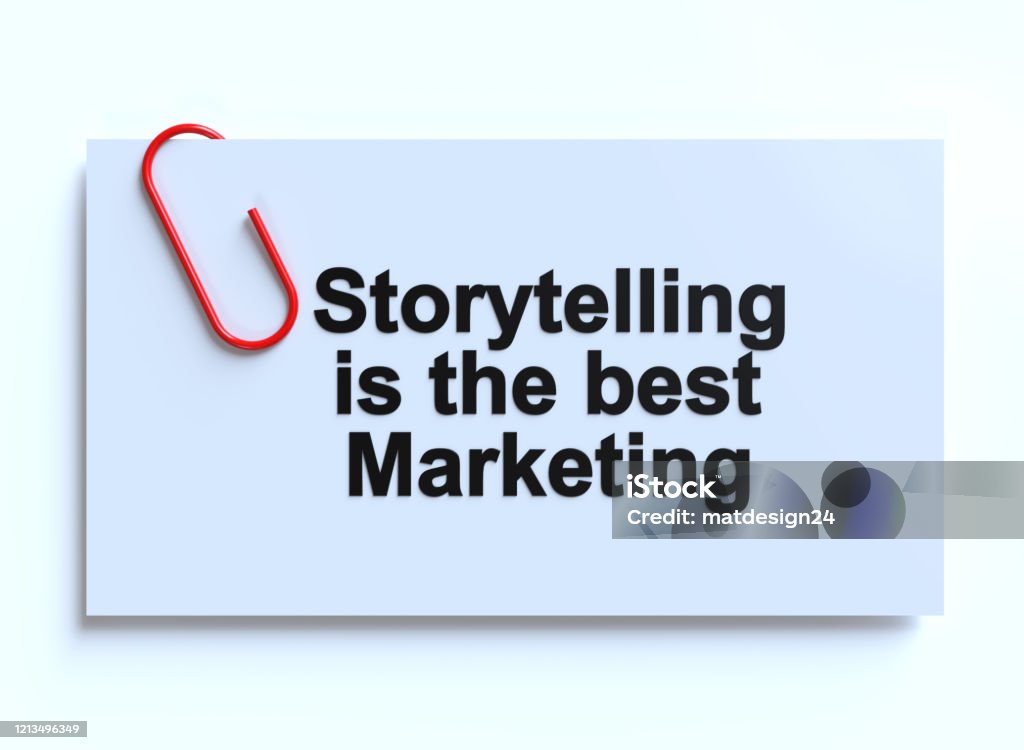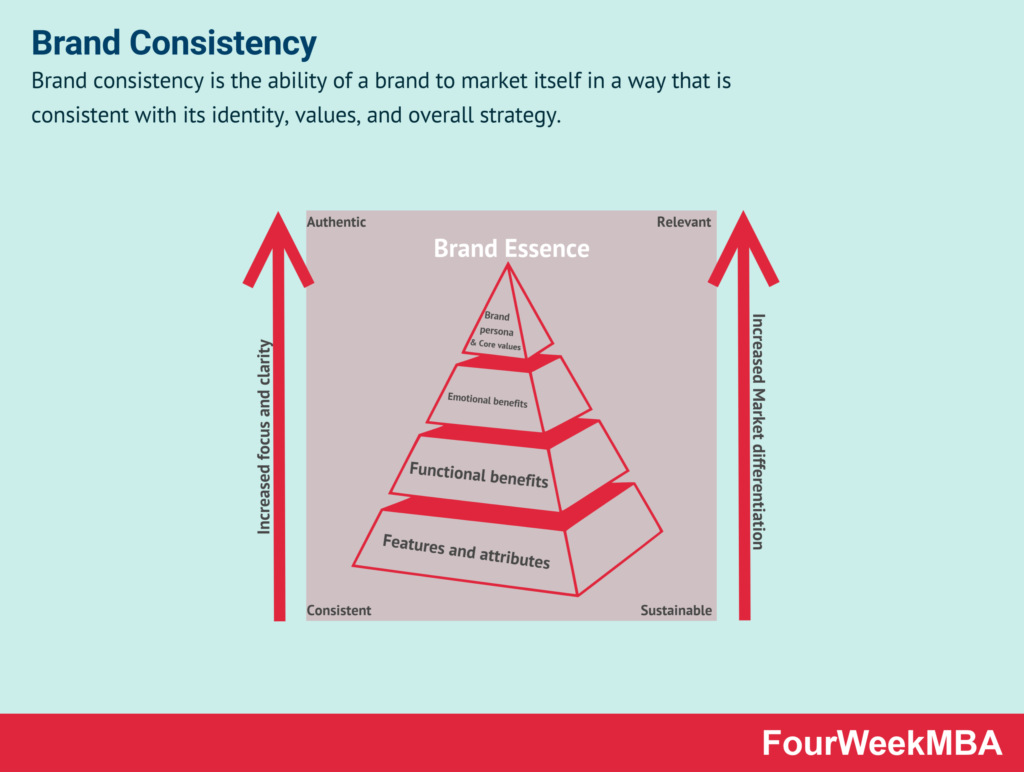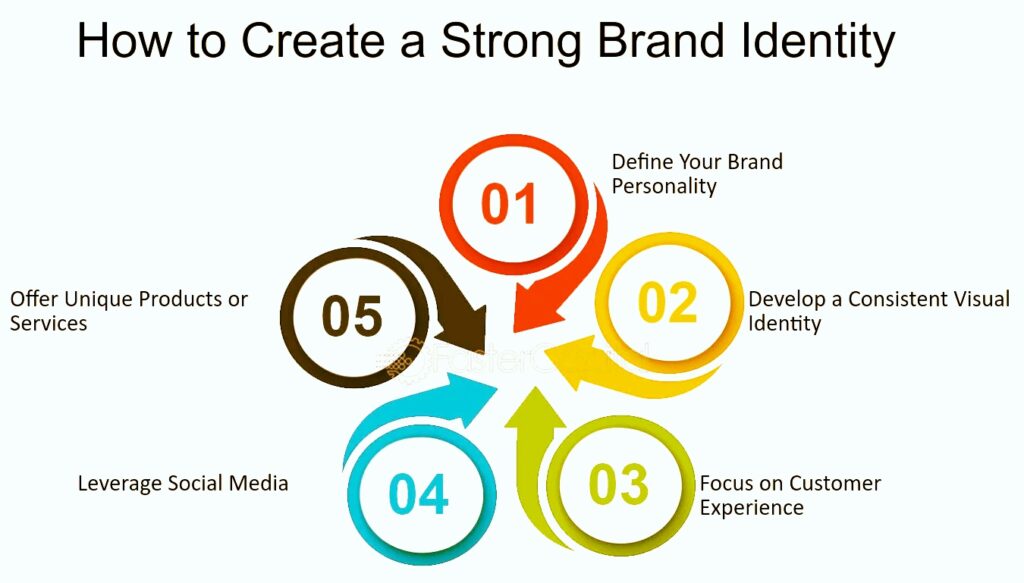081-4797-7173
Why We Encourage Exploring Personal Passions at Work
He looked at me while giving a profound quote by Rumi
“Let the beauty of what you love be what you do.”
The shift in my mindset made me realize that engaged and fulfilled employees are more productive, innovative, and committed to their work mostly because of the passion in doing it.
Exploring your personal passions at work is more than just showing up to work and completing assigned tasks.
Its purpose is to tap into an individual’s intrinsic motivations and interests.
Encouraging employees to pursue their passions, whether it’s pursuing a hobby, volunteering for a cause, or writing this article while smiling😁, can be of great benefit to both the individual and organization.
To be real though, You won’t love everything you do, and that’s okay. Each job teaches you new skills and new ways of thinking, contributing to your future.
And, News flash, just because you’ve found a job you’re passionate about doesn’t mean it’s your dream job.
So here are 3 realms one will attain with passion as the driving force.
Enhanced Employee Engagement
Employee engagement is a critical component to the success of any company. This refers to an employee’s emotional commitment to their role, team, and company goals.
When employees are engaged, they are more motivated, more productive, and more engaged in their work.
Encouraging employees to pursue their personal passions at work can significantly increase employee engagement in several ways:
- Increased motivation and enthusiasm: When employees are able to pursue their personal passions at work, they are more motivated and enthusiastic about their work. Whether they take part in projects that align with their interests or incorporate hobbies into their daily work, employees find more meaning and joy in their work.
- Improved job satisfaction and morale: Exploring personal passions in the workplace can lead to greater job satisfaction and morale among employees. When individuals are able to align their personal interests with their professional responsibilities, they experience a deeper sense of fulfillment and happiness in their roles. This, in turn, leads to higher levels of job satisfaction and overall morale within the organization.
- Strengthened sense of purpose and fulfillment: When employees are able to pursue their passions at work, they find more meaning and fulfillment in their work. When employees feel that their contributions are meaningful and aligned with their personal values and interests, they are more likely to be engaged and committed to achieving organizational goals.
Fostering Creativity and Innovation
Creativity and innovation are essential success factors in today’s rapidly evolving business environment.
By fostering an environment that encourages employees to pursue their personal passions at work, companies can unlock new levels of creativity and innovation. Here’s how:
- Diverse perspectives and ideas: When employees are encouraged to pursue their personal passions, diverse perspectives and ideas emerge. Through their unique experiences, interests, and skills, individuals can provide new insights and approaches to solving problems and generating new ideas. By leveraging this diversity, companies can tap into a wealth of creativity and innovation.
- Breakthrough solutions and problem-solving: Personal passion often fuels creativity and inspires individuals to think outside the box. By giving employees the opportunity to pursue their passions at work, companies create an environment that fosters innovative solutions and problem-solving. Whether it’s developing innovative products, processes, or strategies, employees who are empowered to act on their passions can drive meaningful change and innovation within their companies.
- Encouragement of experimentation and risk-taking: Exploring your personal passions often means stepping out of your comfort zone and taking risks. Organizations that encourage employees to pursue their passions also foster a culture of experimentation and risk-taking. By accepting failure as a natural part of the innovation process, employees feel empowered to take calculated risks and try new ideas without fear of judgment or retaliation. This culture of experimentation ultimately leads to more innovation and success for the organization.
Building Stronger Teams and Relationships
Encouraging employees to explore their personal passions at work can have a huge impact on team dynamics and relationships within your organization.
Here’s how to empower your team and foster stronger relationships:
- Collaboration and teamwork: When individuals are encouraged to pursue their passions, they often find common interests with colleagues, creating opportunities for collaboration and teamwork. Whether it’s shared projects, shared initiatives, or informal discussions, pursuing personal passions brings team members together and fosters a sense of camaraderie and togetherness. By leveraging these common interests, teams can work together more effectively and combine diverse skills and perspectives to achieve common goals.
- Strengthened interpersonal connections: Exploring personal passions at work provides individuals with the opportunity to connect with colleagues on a deeper level. Whether you bond over shared hobbies, interests, or experiences, pursuing personal passions can help break down barriers and foster genuine connections between team members. These interpersonal connections not only improve collaboration and communication within your team, but create an overall more positive and collaborative work environment.
- Creation of a supportive and inclusive work culture: Encouraging employees to pursue their personal passions sends a strong message that their interests and well-being are valued by the organization. Companies foster a sense of belonging and inclusion among employees by creating a culture that supports and respects individuality. When employees feel supported in pursuing their passions, they are more motivated and engaged with their work and team.
Conclusion
Never you forget that your personal passions are not a hindrance to your work, but a source of inspiration and energy.
By harnessing the power of personal passion in the workplace, we can unlock untapped potential, drive meaningful change, and ultimately create a more vibrant and fulfilling work environment for everyone.
Strategies for Prioritizing Mental Wellness in Professional Settings

Mental health in the workplace is now recognized as an important concern, affecting both individual well-being and organizational productivity.
As professionals deal with the demands of a fast-paced environment, as well as the difficulties posed by the COVID-19 epidemic, addressing mental health issues has become critical.
Challenges in the Modern Workplace
The rapid development of modern work environments frequently causes significant stress, burnout, and mental exhaustion among employees.
Excessive workloads, tight deadlines, and a blurred line between personal and professional life lead to increased employee stress.
The Pandemic’s Impact on Mental Health
The COVID-19 pandemic added to mental health issues in the workplace.
Many employees have learned to accept remote work, social isolation, and the blurring of work and personal life as normal. The pandemic’s uncertainty and disruption have increased tension and anxiety.
This has made it more difficult for employees to maintain their psychological well-being.
Reasons why organizations must acknowledge and address the particular problems given by the current global health crisis.
Breaking the Stigma.
Stigma surrounding mental health is still a big barrier to receiving help in professional settings.
Employees are typically hesitant to share their struggles for fear of being judged, discriminated against, or having their careers jeopardized.
This stigma can create a culture of secrecy and avoidance, discouraging employees from seeking the help they need.
Solutions for Promoting Mental Health

Addressing the issues of improving mental health in the workplace involves an integrated strategy that includes regulations, programs, and cultural changes.
Mental Health Awareness Training:
Employers and colleagues who are unaware of and do not understand mental health concerns can make it difficult to create a supportive work environment.
Managers and coworkers who lack suitable education and training may be unable to notice indicators of mental distress or provide necessary help.
This is why organizations should provide mental health awareness training to all employees.
This training should emphasize recognizing indicators of mental illness, eliminating stigma, and encouraging self-care techniques.
Organizations may foster a more supportive and inclusive workplace culture by raising awareness and understanding of mental health issues.
Employee Assistance Programs (EAPs):
Employee Assistance Programs (EAPs) offer confidential counseling and support to employees.
EAPs provide a safe environment for employees to discuss personal and work-related difficulties that affect their mental health.
Organizations can assist employees in overcoming obstacles and developing resilience by giving access to professional support.
Flexible Work Arrangements:
Remote work, flexible hours, and reduced workweeks can all play an important part in improving mental health.
These solutions enable people to better manage their work-life balance while reducing pressure and stress.
Encourage regular breaks, provide access to mental health services, and offer employee assistance programs to help create a healthy work environment.
Fostering a Supportive Work Culture:
Creating an environment of open communication and support is critical for promoting mental health in the workplace.
Employers should create an environment in which employees feel comfortable discussing their mental health concerns without fear of repercussions.
Encourage managers to check in with their team members on a frequent basis, promote peer support networks, and establish routes for anonymous feedback can all help to create a friendly work environment.
Organizations may foster a positive and inclusive workplace by putting employee well-being first.
Leadership Commitment:
Organizational efforts to enhance mental health are most effective when leaders are committed.
Leaders should set an example by prioritizing their own mental health and openly emphasizing the value of mental health in the workplace.
Leaders who demonstrate a commitment to promoting psychological wellness can set the tone for the entire organization and foster a culture that values employee well-being.
Including Mental Health in Policies:
Organizations should create policies that expressly promote mental health.
Access to mental health resources and support services is critical for fostering mental well-being in the workplace.
Employers can engage with mental health specialists to provide counseling services, workshops, and resources to employees.
Furthermore, building peer support networks and employee resource groups helps foster a sense of belonging and solidarity among employees.
Fostering Psychological Safety:
Establishing a culture of trust, respect, and psychological safety is critical.
When employees feel comfortable seeking assistance when necessary, the organization can address mental health challenges and give timely support.
Additionally, it’s critical that organizations provide early intervention and assistance for staff members dealing with mental health difficulties as their top priority.
This could include training managers and HR professionals to spot indicators of mental distress and give necessary assistance and accommodations.
Creating a supportive return-to-work approach for employees returning from mental health absences is also critical.
Creating a Positive Work Environment:
Fostering a positive work environment is essential for promoting mental health. A workplace where people feel appreciated, supported, and empowered to prioritize their mental health is critical.
Conclusion
Promoting mental health in the workplace is a shared duty that requires cooperation from individuals, supervisors, and organizational leaders.
Organizations can create better and more productive work environments for their employees by introducing mental health-promoting policies, programs, and cultural changes.
By tackling the issues connected with encouraging mental health, organizations may assist their employees’ current and future well-being and success.
MAXIMIZING PARTNERSHIPS AND CO-MARKETING: Getting the most value from brand collaboration.
Increased brand awareness, expanded market presence, mutual business growth? want to level up on all these? Try co- marketing and partnership. After all, it’s a proven way for you to scale up and grow.
Strategic collaborations have emerged as powerful tools for your brand to amplify its reach and impact. In today’s business world, teaming up with others through co-marketing is a smart choice.
It means two or more companies join forces, share goals, and together create a bigger impact in their advertising efforts.
Curious about co- marketing? This article would produce all the laid down knowledge you need to know about co- marketing and how to get started.
WHAT IS CO- MARKETING?
Co-marketing is a strategic collaboration between two or more companies where they join forces to promote a product or service.
In a co-marketing arrangement, your company might co-create content, share marketing campaigns, or even develop joint products.
The aim is to broaden their reach, tap into new customer bases, and amplify the impact of their marketing efforts.
HOW DOES CO-MARKETING WORK?
Ever wondered how co-marketing could elevate your business? Let’s break it down. First off, it’s a collaboration – you team up with another company that aligns with your values and goals.
Together, you set clear marketing objectives, whether it’s boosting brand awareness or launching a joint product.
Now, the magic happens in the strategy phase. You and your partner brainstorm and develop a plan. Maybe you co-create content, share marketing channels, or even collaborate on a product.
The key is sharing resources to make your campaigns more impactful.
Content creation is a big player here. Think joint blog posts, shared social media campaigns, or co-produced videos.
This content not only reflects your shared goals but also reaches a broader audience.
The beauty of co-marketing? You get to cross-promote each other. Your partner’s audience becomes yours, and vice versa.
It’s like opening a door to a whole new group of potential customers.Numbers matter, too.
You track how well your joint efforts are doing – engagement, conversion rates, customer acquisition.
This data-driven approach helps you understand what’s working and what needs tweaking for the next collaboration.
Co-marketing isn’t just a one-time thing. Successful collaborations often lead to long-term relationships.
This means more opportunities for growth, more shared campaigns, and a continuous cycle of mutual benefit.
BENEFITS OF CO-MARKETING
Ever wondered what co-marketing can do for you? Let’s look at some of it’s benefits;
AMPLIFIED REACH
Imagine expanding your reach without doubling your efforts. Co-marketing allows you to tap into your partner’s audience, exposing your brand to new potential customers.
It’s like instantly broadening your reach without starting from scratch.
SHARED RESOURCES, REDUCED COSTS
Co-marketing is like a marketing potluck – you bring your strengths, and your partner brings theirs.
By sharing resources, be it marketing budgets, creative assets, or expertise, you’re not just doubling impact; you’re reducing costs. It’s a win-win.
CREDIBILITY BOOST
Partnering with another brand adds a layer of credibility. Recommendations from trusted sources resonate more with consumers.
Co-marketing creates an association that can enhance your brand’s credibility and trustworthiness.
DIVERSE SKILL SETS
Two heads are better than one, right? Co-marketing lets you tap into the diverse skill sets of your partner.
Whether it’s content creation, social media savvy, or strategic planning, you’re bringing a mix of skills to the table, creating a more comprehensive marketing approach.
CROSS-PROMOTIONAL OPPORTUNITIES
The collaborative nature of co-marketing opens doors to cross-promotional opportunities.
You get to feature each other’s products or services, providing your audience with more value and variety.
BUILDING STRONGER RELATIONSHIPS
Successful co-marketing often leads to enduring relationships. The trust built during collaborations paves the way for future partnerships.
It’s not just about one campaign; it’s about building a network of mutually beneficial relationships.
DATA INSIGHTS AND CONTINUOUS IMPROVEMENT
Co-marketing is not just about collaboration; it’s about learning and growing. By tracking performance metrics, you gain valuable insights by.
This data-driven approach helps you make informed decisions, optimizing your strategies for even better results in future campaigns.
YOUR STEP BY STEP PROCESS FOR PLANNING AND IMPLEMENTING A CO-MARKETING CAMPAIGN.
Planning and implementing a co-marketing campaign might just be the strategy you’re looking for. Here’s your step-by-step guide:
IDENTIFY THE RIGHT PARTNER
Before diving in, find a partner whose values align with yours. Look for a business with a similar target audience but complementary products or services.
This sets the stage for a collaboration that feels natural and resonates with both audiences.
DEFINE CLEAR OBJECTIVES
What do you want to achieve with this collaboration? Whether it’s boosting brand awareness, increasing sales, or launching a new product, defining clear objectives sets the tone for your entire campaign.
DEVELOP A COHESIVE STRATEGY
Brainstorm with your partner to develop a strategy that aligns with your goals.
Decide on the type of content you’ll create together, the channels you’ll leverage, and the overall messaging. A cohesive strategy ensures a unified front in your marketing efforts.
TAKE ADVANTAGE OF EACH OTHER’S STRENGTHS
Co-marketing is all about synergy. Identify each other’s strengths and leverage them.
If one excels in social media while the other is great at creating engaging content, combine these strengths to create a more comprehensive campaign.
PROMOTE CROSS-BRAND VISIBILITY
Ensure that both brands are prominently featured throughout the campaign. Cross-promote each other’s products or services to maximize visibility.
This creates a unified message that resonates with both audiences.
MONITOR AND ADJUST
Throughout the campaign, monitor its performance closely. Be ready to adjust your strategy if needed.
Analyze the data and insights to understand what resonates with your audience and how you can improve for future collaborations.
NURTURE THE RELATIONSHIP
Successful co-marketing campaigns often pave the way for enduring partnerships. Nurture the relationship with your collaborator.
Regular communication, shared learnings, and joint planning sessions set the stage for future successful collaborations.
CONCLUSION
In the world of working together with other brands, teaming up is the key to making your business even better.
It’s like a magic trick that helps you reach more people and discover new opportunities.
Creating campaigns, using digital platforms, and looking at how well things are going become the building blocks of your teamwork success.
Learn from big brands’ stories – they’re like guides showing you how to succeed by working together.
In simple terms, teaming up is a journey where you keep learning and making your business stronger.
The friends you make during these collaborations stick around, creating a network of long-lasting partnerships.
So, go ahead, start this teamwork adventure, and watch your business shine in the exciting world of working together
Financial Stress and Mental Health: What You Need to Know and How to Cope

Financial stress can have significant effect on mental health, reducing people’s overall quality of life and causing psychological, emotional and social issues.
The relationship between Financial Stress and Mental Health
Financial stress may arise from a variety of factors, such as job loss, debt, unplanned spending, and low income.
These pressures can cause anxiety, depression, and other mental health problems, negatively influencing people’s emotional and psychological well-being.
According to research, financial strain leads to increased levels of psychological discomfort, which can impair cognitive functioning and decision-making ability.
Individuals with pre-existing mental health disorders may be more vulnerable to the negative impacts of financial stress, worsening their symptoms and overall suffering.
Causes of Financial Stress

Uncertainty about financial stability can cause constant anxiety and depression, affecting a person’s daily activities.
The stress reaction, while beneficial in short bursts, becomes damaging when activated constantly.
It impairs decision-making ability, frequently leading to poor financial choices that compound current problems.
Debt, in particular, has a long-term impact on one’s mental health as the pressure of owing money is heavy, with people reporting emotions of guilt and failure.
These feelings can cause social disengagement, which worsens loneliness and has a negative influence on mental health. It’s a difficult cycle to break without the correct resources and solutions.
Psychological Effects of Financial Stress
Financial stress can cause high levels of anxiety, which is defined by excessive concern and fear about financial security and future results.
Individuals may experience depression symptoms such as chronic sadness, loss of interest in activities, and feelings of hopelessness as a result of financial difficulties.
Furthermore, financial worries can disrupt sleep, cause irritation, and impair concentration, affecting people’s overall functioning and quality of life.
Social effects of financial stress
Also, financial stress may negatively impact relationships, increasing emotional tension.
Money issues are a frequent source of conflict between partners, and they can even lead to separation or divorce.
Such effects have a significant impact on both adults and children, perhaps shaping their future relationship with money and stress.
Strategies to Manage Financial Stress
Managing financial stress requires a comprehensive approach that considers both the practical and emotional aspects that contribute to financial well-being.
Here are some helpful techniques for dealing with financial struggles:
Create a Budget and Stick to It:
Effective financial management requires the creation of a realistic budget.
It aids in the tracking of spending, prioritizing needs, and setting achievable savings goals.
Begin by determining necessary expenses such as housing, utilities, and groceries, and then allocate a portion of your salary to each category.
To stay inside your budget, prioritize necessary costs and reduce non-essential spending.
This approach promotes financial control, which helps reduce anxiety.
Seek Professional Financial Advice:
Working with a financial advisor can provide significant knowledge and help on creating a financial plan that is personalized to your individual requirements and objectives.
A professional can assist you in exploring debt management choices, investment techniques, and long-term financial planning, allowing you to make more informed financial decisions.
This assistance can help to lessen the stress of dealing with financial difficulties on one’s own.
Practice Self-Care and Prioritize Mental Well-Being:
Maintaining your mental health is critical during times of financial stress.
Exercise, mindfulness, and relaxation practices can help reduce anxiety and enhance general well-being.
Prioritize self-care activities that make you happy and fulfilled, such as hobbies, spending time with loved ones, or following personal interests.
Create a Support Network:
Friends, relatives, or support groups can provide emotional support during times of financial difficulty.
Share your problems and experiences with trusted people who can provide support, empathy, and practical aid as needed. Effective communication is essential for dealing with financial stress.
Talking freely about financial issues with family or a close friend might bring emotional relief. It provides an opportunity to seek counsel or simply air one’s grievances.
Conversations like this might also assist to create a supportive environment for dealing with financial challenges.
Connecting with others who are facing similar issues can also provide a sense of support and affirmation.
Set Achievable Financial goals:
Setting attainable financial goals can keep you motivated and focused on improving your financial status.
Begin by identifying short- and long-term goals, such as debt repayment, emergency fund building, and retirement savings.
Celebrate small wins along the road to keep your drive and sense of accomplishment.
Building an emergency fund:
Creating an emergency fund is an excellent approach to reduce financial stress.
This safety net allows you to meet unforeseen expenses without incurring debt. It gives one peace of mind to know that they are financially prepared for unexpected expenses.
Starting little and saving consistently can help you build up a large sum over time.
Address Underlying Issues:
Addressing underlying issues that contribute to financial stress is crucial for long-term financial stability.
Identify areas where you may be overspending or lacking financial awareness, then take action to improve these issues.
Educate yourself on financial management, seek tools and help, and devise practical measures to improve your financial status.
Investing in one’s financial literacy might be beneficial as understanding the fundamentals of finance, including savings, investments, loans, and insurance, can help you make smarter decisions.
This information enables people to navigate the financial world with confidence, which can benefit their mental health.
Wellness practices:
Wellness habits, such as mindfulness and exercise, may assist in reducing the impacts of financial stress.
These techniques encourage relaxation, boost mood, and improve general mental wellness.
They provide appropriate coping techniques in the face of financial difficulties.
Seek Professional Help:
When financial stress becomes excessive, it is critical to seek mental health care.
Therapists and counselors can help people manage stress, develop coping techniques, and treat underlying emotional difficulties.
They provide a nonjudgmental environment for people to examine their emotions and build appropriate stress management strategies.
And can assist you in developing resilience in the midst of financial issues, as well as navigating tough emotions in a healthy and productive manner.
Conclusion
Financial stress has a profound impact on mental health, hurting both emotional well-being and general quality of life.
Individuals can enhance their financial resilience and mental health by applying good money management practices such as budgeting, getting expert assistance, practicing self-care, and forming a support network.
It is critical to realize the importance of prioritizing mental health, particularly during times of financial hardship, and to get treatment when necessary to address underlying emotional issues and develop coping techniques for stress management.
Individuals who take proactive actions to reduce financial stress and emphasize mental well-being can improve their overall resilience and well-being in the face of financial hardship.
Avoiding Burnout as A Digital Marketer – How to Break The Cycle
With the hassles of working in the competitive industry as a digital marketer, it’s easy to get overwhelmed.
While the remote work environment has the advantage of allowing work from any corner of the world, with digital marketing this also means longer hours, working over holidays and handling many tasks simultaneously which can easily leave you burnt out.
Over the course of this article, we’ll highlight ways of avoiding burnout as a digital marketer and build sustainable mindsets and habits.

Ways of avoiding burnout as a digital marketer
Time Management:
It can be daunting having too many tasks to do and various clients to keep up with.
You end up working beyond a healthy time and far off into what should be your personal time in order to meet deadlines.
It’s best to combat this by creating a schedule that suits your work style and preferences which has you working a certain fixed amount of time.
Prioritize Your Breaks:
When you’re constantly working in overdrive and barely giving yourself time to sleep, burn out is an inevitable consequence.
Your mental health should be as important as the job you’re working, maybe even more so as this is what determines your overall performance.
It’s important to remember to take breaks, give yourself time to rest and recover your energy.
Know Your Limitations:
While it is commendable to take on simultaneous projects, this can also leave you feeling stretched thin.
When your tasks become too overwhelming, it’s important to let your manager know so you can focus on one at a time.
A healthy work environment should allow for healthy communication to maximize productivity so don’t hold back from letting them know.
Exercise:
With digital marketing, it can be easy to forget to consider your physical health as you’re constantly in front of a screen.
This is a habit you can incorporate into your schedule that helps boost your thinking and overall health which ultimately leads to increased productivity.
Meditation:
Get some time away from your projects and work to just focus and breathe.
This can be done during your breaks in as little as five minutes but the benefits can prove very rewarding.
Conclusion
The work of a digital marketing can be quite challenging to balance productivity while also maintaining your own personal time and prioritizing your mental health so it’s important to find a way to break the cycle using the tips highlighted above.
Optimizing Multicultural Audiences: Connect with diverse communities (Be Authentic)
Currently, businesses aim to be globally recognized and create multicultural communities. With this in mind, businesses gather knowledge on how to create communities that resonate with their vision.
We know that global recognition generates leads/partnerships for businesses. But it also challenges the authenticity of the business.
So, understanding your multicultural audience’s unique needs, preferences, and values. You are solidifying trust with our new audience while creating a user-friendly experience.
Now that you understand what global recognition entails, let’s learn how to connect with multicultural communities. This blog will teach you;
- Who are Multicultural Audience
- Ways of Communicating with Multicultural Audiences
- Benefits of Multicultural Community
- Case Study of Optimizing Multicultural Audience
With this, you can understand how to connect globally with your audience from diverse races and cultural groups.
Who Are Multicultural Audiences
A multicultural audience refers to a group of individuals from diverse cultural backgrounds, ethnicities, and languages, with their experiences, beliefs, values, and preferences.
Ways of Communicating with Multicultural Audiences
Respect and Cultural Sensitivity
- Learn about the history, traditions, and customs of the communities you’re engaging with.
- Approach interactions respectfully, acknowledging your lack of knowledge about their culture.
- Be mindful of cultural norms, language preferences, and potential taboos.
Genuine Engagement
- Being sincere in your intentions to connect and build relationships.
- Practicing active listening to understand the needs, concerns, and aspirations of the community.
- Encouraging dialogue and feedback to build communication.
Team and Language
- Ensure marketing materials, and teams reflect the diversity of the communities you’re engaging with.
- Use simple language, and avoid jargon while acknowledging different ethnicities.
Building Trust
- Be consistent in your messaging and build trust over time.
- Be open and transparent about your intentions and how you plan to contribute positively to the community.
- Conduct business and engagement activities ethically and responsibly.
Community Involvement and Empowerment
- Collaborate with community organizations, leaders, and influencers to co-create initiatives.
- Get involved in causes and initiatives that matter to the community, showing genuine support.
- Seek ways to empower community members economically, socially, or through education and resources.
Tailored and Relevant Content
- Create content and messages that resonate with the community’s values and experiences.
- Adapt your offerings and communications to the language and cultural context of the community.
- Share stories that reflect the diversity and richness of the community’s experiences.
Long-Term Commitment
- Build relationships with a long-term perspective, rather than seeking short-term gains.
- Stay engaged with the community even when you’re not promoting a product or campaign.
- Continuously seek feedback and be willing to adapt based on the community’s needs and preferences.
Celebration and Recognition
- Acknowledge and celebrate cultural holidays, events, and achievements.
- Give credit to community members for their contributions and successes.
- Showcase the diversity within the community to promote understanding and appreciation.
Education and Awareness
- Train your team on cultural competence and sensitivity.
- Offer educational resources and workshops to promote cross-cultural understanding.
- Use your platform to raise awareness about issues affecting diverse communities.
Benefits of Multicultural Community:
- Building trust and loyalty leads to long-term relationships.
- Enhances brand reputation as socially responsible and culturally aware.
- It encourages innovation and creativity through diverse perspectives and ideas.
- Provides valuable insights into diverse markets and consumer behaviors.
- Contributes positively to social inclusion and equity.
Case Study of Optimizing Multicultural Audience
This case study is to show how big brands create a community using the phrase “America is beautiful”.
Coca-Cola: The Coca-Cola brand is the top brand in soft drinks. They decided to expand their business by running diverse advertisements. That ad starts with a beautiful place in America; in the background, different voices are singing “America the Beautiful” in a different language. Through this ad, they succeed in multicultural marketing. Because it introduces different languages and welcomes a global audience.
Conclusion
Recent times have show, how important multicultural audience can be to the business, and its very important for every business to have a community not just locally but also globally.
Always strive to build communities and learn the integral of communicating with them.
The Power of Storytelling in Marketing – Using narrative techniques to craft compelling campaigns

From history to ancient civilizations sharing tales around the campfire to modern-day brands captivating audiences through social media showcases the power of storytelling, which remains unparalleled.
Like most cultural practices familiar to us, storytelling is one, if not the oldest and best-known culture.
You would agree with me that in our childhood days, most of the things or lessons we know now were told or passed down to us through stories told by parents, grandparents, and great-grandparents in the form of folklore.
An example would be the famous animal kingdom stories with popular animal characters such as the tortoise, the hyena, the lion, and others.
They capture our fantasies and also keep us coming back for more.
Most of the big brands and companies we all know, such as Apple, Nike, Coca-Cola, Dove, Indomie noodles, and many others, utilize storytelling to draw the attention of their audience to specific narratives through interesting, detailed content in order to engage customers or prompt them to take action.
In this article, we will explore the profound impact of storytelling in marketing and how it can be effectively employed to drive brand awareness, foster customer loyalty, and ultimately boost business success.

What is Storytelling?
Storytelling is the ancient art of human expression, using language to transport listeners and readers to imaginary worlds and evoke powerful emotions.
It communicates narratives, introduces new ideas, and sparks inspiration through vivid imagery and captivating narratives.
It is the science of using words to express an idea, narratives and create engagements.
What are Narrative Techniques?
Narrative techniques are the elements of storytelling that shape how the story is told, such as characters, perspective, setting, plot, style, theme; each of these narrative techniques can be used to enhance your campaign and make it more appealing, relatable, and impactful to your audience.
Understanding the Essence of Storytelling in MarketingAt its core, storytelling in marketing involves crafting narratives that evoke emotions, convey messages, and ultimately drive action.
By weaving together characters, plots, and settings, marketers can humanize their brands and establish authentic connections with their target audience.
Whether it’s through videos, blog posts, or social media content, every piece of marketing collateral presents an opportunity to tell a compelling story.
Moreover, storytelling in marketing is an art that, when mastered, can resonate on a deep, emotional level with the audience, creating not just customers but loyal advocates.
In this digital era, where content is consumed at a rapid pace, stories that captivate the imagination and stir emotions stand out, cutting through the noise and ensuring a memorable and lasting impression.
Elements of storytelling
In using narratives to craft compelling campaigns, it important to understand basic elements to incorporate to achieve an effective storytelling, these elements are also referred to as narrative techniques:
Identifiable Characters:
Identifiable characters are familiar imagery that resonate with your specific target audience. Characters are the heart beat of any story.
Create relatable characters that embody the values and aspirations of your target audience.
Whether it’s a customer success story or a brand mascot, memorable characters serve as anchors for your narrative.
Compelling Plot:
Develop a storyline that captivates attention and maintains interest from beginning to end.
A well-crafted plot should have conflict, resolution, and a clear call to action that aligns with your marketing objectives.
Perspective:
These are the point of view from which the story is narrated, such as first-person, third-person, or omniscient.
Setting:
These refers to the time and place where the story takes place, and how it affects the mood, tone, and theme of the story.
Style:
The choice of words, sentences, and figures of speech that create the voice and tone of the story.
Theme:
The central idea or message that the story conveys, such as love, freedom, or justice.
Authenticity:
Authenticity is key to building trust with consumers. Your story should reflect the genuine values and mission of your brand, avoiding overly promotional or disingenuous content.
Visual and Verbal Storytelling:
Combine visuals, such as imagery and videos, with compelling verbal narratives to create a multi-dimensional storytelling experience.
Consistency in tone, language, and visual aesthetics helps reinforce brand identity.
Emotional Appeal:
Appeal to the emotions of your audience by highlighting human experiences, challenges, and triumphs.
Whether it’s through humor, nostalgia, or empathy, evoke emotions that resonate with your target demographic.

Why are Narrative Techniques Effective for Campaigns?
Narrative techniques are effective for campaigns because they tap into the power of storytelling, which is a fundamental human activity and a universal way of communicating.
Stories can: capture action, evoke emotions, build trust, inspire action and lots more.
Implementing Storytelling Strategies in Your Marketing Campaigns
To use narrative techniques or storytelling strategies for campaigns, you need to follow some basic steps:
Define your goal:
To define your goals, the following questions should be thoroughly asked, in order to make the best use of the narrative technique for your marketing campaign.
The questions are: What is the purpose of your campaign? What do you want your audience to do after seeing or hearing your campaign?
Know Your Audience:
Conduct thorough audience research to understand the preferences, values, and pain points of your target demographic.
Tailor your storytelling approach to resonate with their interests and aspirations. You don’t tell a Nigerian story using a plot in Europe.
Craft a Compelling Brand Story:
Develop a cohesive brand narrative that communicates your unique selling proposition and brand identity.
Your story should differentiate your brand from competitors and leave a memorable impression on consumers.
Utilize Multiple Channels:
Experiment with various marketing channels, such as social media, email marketing, and content marketing, to share your brand story.
Adapt your storytelling techniques to suit the format and audience of each platform.
Measure and Iterate:
Continuously monitor the performance of your storytelling efforts through metrics such as engagement, conversion rates, and brand sentiment.
Use insights from analytics to refine your storytelling strategies and optimize future campaigns.
Leveraging Storytelling in Different Marketing Channels
Social Media:
For social medias narratives should be short, captivating and impactful stories that utilize visuals and user engagement.
Email Campaigns:
Personalized narratives that foster a direct connection and relational attributes with the recipient. Like referring to your audience in messages with their names.
Blogs:
Detailed stories that educate and provide in-depth brand insight.
Video Content:
Dynamic storytelling with the power to visualize and create emotional impact. Great visuals and voices that spark and draw attention.

Why Storytelling?
One timeless strategy continues to stand out in the ever evolving landscape of marketing, which is “storytelling”.
According to “Brandshop (Tumisang Bogwasi)”, the following statistics have highlighted the significance of brand storytelling: With consumer engagement: 92% of consumers wanted brands to make ads that felt like a story.
For memorability: 55% of consumers were more likely to remember a story than a list of facts. With Influence on purchasing decisions: 68% of consumers said that brand stories influenced their purchasing decisions.
Then customer loyalty: companies with compelling brand stories had a 20% increase in customer loyalty. Furthermore, conversion rate: 64% of consumers made a purchase after watching a branded social media video.
Storytelling has a unique ability to captivate, engage, and connect with consumers on an emotional level, enabling brands to leave a lasting impression.
It has so much advantage if done in right and most effective way:
Evoking Emotions and Building Connection:
Humans are inherently drawn to stories. From childhood, we are captivated by tales that transport us to worlds, evoke emotions, and make us feel a part of something bigger.
When applied to marketing, storytelling taps into this innate human tendency, enabling brands to forge a genuine connection with their target audience.
By crafting narratives that resonate with consumers’ values, desires, and aspirations, marketers can create an emotional bond that goes beyond the transactional nature of traditional advertising.
Emotionally engaged customers are more likely to remain loyal to a brand and become advocates, driving word-of-mouth referrals and organic growth.
For example: we have the Mom first choice storyline which is a trending tagline in almost every grocery shopping in Nigeria, from noodles, detergents, and cereals, etc.
Moms are special, I love my Mom, like who doesn’t cherish his/her Mom.
Differentiation and Brand Identity:
In an overcrowded marketplace, differentiation is key. Storytelling provides a powerful tool for brands to set themselves apart from competitors by communicating their unique value proposition and brand identity.
By sharing the story of how the brand came into existence, its core values, and the impact it aims to make, marketers can create a distinct narrative that resonates with their target audience.
This narrative becomes an integral part of the brand’s identity, helping consumers relate to and align themselves with the brand’s mission and purpose.

Memorable and Engaging Content:
In an era of information overload, attention is a scarce resource. Storytelling enables marketers to cut through the noise and create memorable and engaging content.
Stories have a natural structure that captures attention and maintains interest.
By weaving narratives into marketing campaigns, brands can create a cohesive and immersive experience for their audience.
Whether through videos, blog posts, social media campaigns, or advertisements, storytelling allows marketers to deliver their message in a way that holds attention, sparks curiosity, and generates a lasting impact.
Let your audience keep you at top priority every time with the contents you give.
Most reports has shown that stories stemming from real customer interactions are especially influential in molding brand image through social platforms.
By sharing first-hand accounts of customer experiences, brands can powerfully sway public perceptions across social media.
These types of narrative tales directly from the customer’s perspective prove particularly impactful compared to other forms of online content
Making Data Meaningful:
Data and statistics are essential in marketing, but they often fail to create a lasting impact on their own. Storytelling offers a way to make data meaningful and relatable.
By contextualizing data within a narrative framework, marketers can bring numbers to life, making them more accessible and memorable for the audience.
Stories help consumers understand the significance of data, making it more persuasive and actionable. This combination of data and storytelling enables marketers to build trust, credibility, and authority within their industry.
In a study by Dan and Chip Heath, after a presentation only 5% of people could recall specific statistics shared by the presenter.
However, 63% could remember the story the presenter told. This demonstrates that storytelling leads to higher memory retention and engagement compared to citing statistics alone.
Shaping Purchasing Decisions Through Narratives:
Crafting compelling stories enables brands to substantially impact customer choice and purchasing patterns.
By appealing to emotions and imagination, effective storytelling helps guide consumer preferences and product selections. When a brand tells a compelling story, it can shape consumers’ perceptions, attitudes, and purchasing decisions.
By strategically incorporating storytelling techniques into marketing campaigns, brands can create a sense of urgency, evoke desire, and drive action.
Stories have the power to influence how consumers perceive the value of a product or service, making them more likely to engage with the brand and convert into loyal customers.
Conclusion
In this present time inundated with advertisements and marketing messages, storytelling remains a potent tool for cutting through the noise and capturing the hearts and minds of consumers.
By leveraging narrative techniques and crafting compelling campaigns, brands can forge deeper connections with their audience, drive brand loyalty, and ultimately achieve marketing success.
Embrace the power of storytelling, and watch your brand’s narrative unfold in the hearts of consumers worldwide.
Connecting Online and Offline Experiences – Bridging digital and physical touch
In our rapidly evolving digital era, the intersection of online and offline experiences has become a paramount aspect of our daily lives.
The seamless integration of these two realms, commonly referred to as bridging digital and physical touchpoints, is reshaping how we interact with the world.
This dynamic relationship holds significant implications for businesses, individuals, and the overall landscape of human connections.
The Rise of the Hybrid Experience:
The digital age has brought forth unparalleled convenience, enabling us to navigate various aspects of our lives with a click or a tap. However, the craving for tangible, real-world experiences persists.
The concept of merging online and offline encounters has given rise to the hybrid experience, aiming to strike a delicate balance between the convenience of the virtual realm and the richness of physical engagement.
Enhancing Consumer Engagement:
Businesses are increasingly recognizing the importance of creating a seamless transition between online and offline touchpoints to enhance consumer engagement.
Whether it’s a retail brand offering personalized online shopping experiences that seamlessly integrate with in-store visits or a restaurant allowing customers to order online and dine-in, the goal is to create a holistic journey that transcends digital and physical boundaries.
From Clicks to Bricks:
The “clicks to bricks” phenomenon exemplifies the transformative power of merging digital and physical realms.
Online-born businesses are establishing physical stores to provide customers with a hands-on experience.
Conversely, traditional brick-and-mortar establishments are harnessing the digital space to expand their reach, connect with a broader audience, and enhance customer interactions beyond the physical storefront.
Social Connectivity in the Real World:
While social media has revolutionized how we connect online, the importance of face-to-face interactions remains undeniable.
Bridging the gap between virtual friendships and real-world connections has become a driving force.
Events, meetups, and experiences that originated online are now finding expression in the physical world, fostering deeper and more meaningful relationships.
Challenges and Opportunities:
Despite the promising prospects of connecting online and offline experiences, challenges exist. Privacy concerns, data security, and the need for infrastructure to support seamless integration are among the hurdles to overcome.
However, these challenges present opportunities for innovation, emphasizing the importance of developing technologies and strategies that prioritize user trust and convenience.
The Role of Technology:
Advancements in technology play a pivotal role in the convergence of online and offline experiences.
Augmented reality (AR), virtual reality (VR), and the Internet of Things (IoT) are instrumental in creating immersive encounters that bridge the gap between the digital and physical worlds.
Whether it’s trying on clothes virtually before making a purchase or using location-based services to enhance in-person experiences, technology acts as the glue that binds these two dimensions.
conclusion
In conclusion, the synergy between online and offline experiences is not just a trend; it’s a transformative force shaping the way we live, connect, and conduct business.
The successful integration of digital and physical touchpoints requires a thoughtful approach, balancing the advantages of both worlds.
As we navigate this evolving landscape, the key lies in creating harmonious experiences that seamlessly transition between the digital and physical realms, ultimately enriching our lives in ways previously unimagined.
Building an Agile Marketing Team
Agility has been a success factor. Traditional marketing methods, characterized by rigid structures and long planning cycles, are no longer sufficient to keep up with the speed of change in today’s digital age.
Agile marketing is a methodology inspired by agile software development principles that emphasizes on flexibility, collaboration, and continuous improvement.
An agile marketing team is structured to quickly adapt to changing priorities, customer feedback, and market trends, allowing your company to respond quickly to new opportunities and challenges.
This article explores the concept of building an agile marketing team and organizing it flexibly. Covers the core principles of agile marketing, explains how to effectively structure teams, and explores best practices for implementing agile practices in your marketing organization.
From cross-functional teams to iterative workflows to customer-centric approaches, we examine the key components of agile marketing and provide insights to overcome challenges and drive success.
Understanding Agile Principles
Overview of Agile Methodology
Agile methodologies represent a departure from traditional linear project management approaches by focusing on collaboration, adaptability, and customer feedback.
Agile methodologies have their origins in the field of software development and emphasize iterative development cycles, cross-functional teams, and continuous improvement.
In the marketing field, agile principles are being adopted to meet the unique challenges and requirements of marketing campaigns and projects.
Adopting agile principles gives marketing teams greater flexibility, faster time to market, and better alignment with customer needs.
Key Principles of Agile Marketing
Agile marketing is guided by several key principles that guide our approach to planning, execution, and measurement.
These principles include an iterative plan that breaks down marketing efforts into small, manageable tasks called “sprints,” allowing teams to adapt and pivot based on new insights and market feedback.
Cross-functional collaboration is another cornerstone of agile marketing, where teams of members from different disciplines work together to achieve a common goal.
Additionally, rapid experimentation and data-driven decision-making are core tenets of agile marketing, allowing teams to test hypotheses, gather feedback, and optimize campaign performance in real-time.
Comparison with Traditional Marketing Approaches
Traditional marketing methodologies often follow a linear, waterfall-style approach characterized by extensive planning, long lead times, and limited flexibility.
In contrast, agile marketing offers a more dynamic and iterative alternative, enabling teams to respond quickly to changing market conditions and customer preferences.
By embracing agile principles, marketing teams can overcome the constraints of traditional approaches, delivering campaigns that are more responsive, adaptable, and customer-centric.
While traditional marketing methods may still have their place in certain contexts, agile marketing represents a paradigm shift towards greater agility, innovation, and customer engagement.
Structuring Agile Marketing Teams
Agile methodology has revolutionized the way marketing teams operate, offering a flexible and adaptive framework that enables organizations to respond quickly to market changes and customer needs.
Central to the success of agile marketing is the structuring of cross-functional teams, implementation of iterative workflows, and adoption of a customer-centric approach.
A. Cross-Functional Teams
Roles and Responsibilities:
Cross-functional teams are made up of people with different skills and expertise, including marketers, designers, developers, analysts, and project managers. Each team member brings a unique perspective and skill to the overall team’s success.
Collaboration and Communication:
Effective collaboration and communication are essential to the success of cross-functional teams.
Fostering an environment of open dialogue and transparency allows team members to share insights, agree on goals, and work together toward common goals.
Benefits of Cross-Functional Teams:
Cross-functional teams have many benefits, including increased creativity, faster decision-making, and increased accountability.
By breaking down silos and fostering cross-disciplinary collaboration, these teams can deliver more innovative and impactful marketing strategies.
B. Sprints and Iterative Workflows
Planning and Execution Cycles:
Agile marketing teams operate in iterative cycles known as sprints, typically lasting two to four weeks. During each sprint, teams plan, execute, and review marketing activities, allowing for rapid iteration and adaptation based on feedback and insights.
Adaptability and Iterative Improvement:
Agile workflows prioritize adaptability and iterative improvement, enabling teams to respond quickly to changing market dynamics and customer feedback.
By continuously refining strategies and tactics, teams can optimize performance and drive better results.
Implementing Agile Tools and Techniques:
Agile marketing teams leverage a variety of tools and techniques to facilitate collaboration, streamline workflows, and track progress.
These may include project management software, kanban boards, and agile methodologies such as Scrum or Kanban.
C. Customer-Centric Approach
Understanding Customer Needs and Preferences:
Agile marketing focuses on understanding customer needs and preferences. By conducting market research, collecting feedback, and analyzing data, your team can gain valuable insights into customer behavior and adapt your strategy accordingly.
Feedback Loops and Continuous Improvement:
Agile marketing teams incorporate feedback loops into their workflows, allowing for continuous improvement and optimization.
By soliciting feedback from customers, stakeholders, and team members, teams can identify areas for improvement and make data-driven decisions.
Incorporating Customer Insights into Marketing Strategies:
Customer insights serve as the foundation for agile marketing strategies, informing everything from campaign messaging to product development.
By putting the customer at the center of their efforts, agile teams can create more relevant, engaging, and impactful marketing experiences.
Implementing Agile Practices
As companies increasingly adopt agile methodologies to stay competitive in today’s dynamic market environment, adopting agile practices in marketing is critical to driving innovation, efficiency, and customer satisfaction.
A. Agile Marketing Frameworks
Scrum:
Scrum is a popular agile framework that emphasizes iterative development, cross-functional collaboration, and continuous improvement.
From a marketing perspective, Scrum supports teams to plan and execute marketing campaigns in short cycles, so-called sprints, allowing them to quickly adapt to changing market conditions and customer feedback.
Kanban:
Kanban is a visual workflow management tool that allows teams to visualize their work, limit work in progress, and optimize workflow efficiency.
In marketing, Kanban boards help teams track tasks, identify bottlenecks, and prioritize work based on customer needs and strategic goals.
Lean Marketing:
Lean marketing is based on the principles of lean manufacturing and focuses on minimizing waste and maximizing value for customers.
In Lean Marketing, teams prioritize customer focus, experiment with new ideas, and continually refine processes to drive efficiency and innovation.
B. Agile Marketing Tools
Project Management Software:
Project management software, such as Jira, Trello, or Asana, helps agile marketing teams plan, track, and manage marketing initiatives effectively.
These tools facilitate task assignment, progress tracking, and collaboration among team members, streamlining workflows and improving productivity.
Collaboration Platforms:
Collaboration platforms like Slack, Microsoft Teams, and Google Workspace play a critical role in facilitating communication and collaboration within agile marketing teams.
These platforms enable real-time messaging, file sharing, and virtual meetings, facilitating seamless collaboration regardless of the location or time zone of your team members.
Agile Marketing Software Solutions:
Agile marketing software solutions, such as AgileSherpas or Wrike for Marketing, are specifically designed to support agile marketing practices.
These tools offer features like sprint planning, backlog management, and performance analytics, empowering teams to execute agile marketing strategies more effectively and efficiently.
C. Training and Development
Educating Team Members on Agile Principles:
Training team members in agile principles and methodologies is essential to a successful implementation.
Organizations can offer workshops, seminars, or online courses to train marketers on agile concepts, practices, and tools to ensure a common understanding and commitment to agile principles.
Providing Continuous Learning Opportunities:
Agile marketing is a journey of continuous learning and improvement.
Organizations should encourage ongoing learning and development initiatives, such as mentorship programs, peer-to-peer learning sessions, or participation in industry events and conferences, to foster a culture of innovation and professional growth.
Overcoming Challenges and Best Practices
While agile methodologies offer numerous benefits for marketing teams, their adoption can present challenges that hinder successful implementation. Let’s explore some of them.
A. Common Challenges in Agile Marketing Adoption
Resistance to Change:
One of the biggest challenges when adopting agile marketing methodologies is resistance to change.
Marketing teams accustomed to traditional waterfall approaches may be hesitant to adopt agile methodologies due to fear of the unknown, concerns about disrupting established workflows, or skepticism about the effectiveness of agile practices.
Lack of Alignment and Communication:
Effective communication and alignment are essential for successful agile marketing adoption.
However, many organizations struggle with siloed communication channels, misalignment between marketing and other departments, or insufficient collaboration tools and processes, leading to breakdowns in communication and coordination.
Scaling Agile Practices Across Teams:
Scaling agile practices across multiple teams or departments can be challenging, especially in large organizations with complex organizational structures.
Achieving consistency in agile implementation, establishing common processes and standards, and ensuring alignment of goals and priorities across teams are common challenges faced in scaling agile practices.
B. Best Practices for Building Agile Marketing Teams
Leadership Support and Alignment:
Leadership support and alignment are critical for overcoming resistance to change and driving successful agile adoption.
Leaders should champion agile methodologies, provide resources and training for team members, and actively participate in agile ceremonies to demonstrate their commitment to agile principles.
Clear Goals and Objectives:
Clear goals and objectives are essential for guiding agile marketing initiatives and measuring success.
Marketing teams should align their activities with strategic business objectives, define measurable outcomes and key performance indicators (KPIs), and regularly evaluate progress against predefined goals to ensure alignment and accountability.
Flexibility and Adaptability:
Agile marketing requires flexibility and adaptability to respond quickly to changing market conditions, customer feedback, and business priorities.
Teams should embrace a mindset of continuous improvement, prioritize experimentation and learning, and be willing to iterate on strategies and tactics based on real-time insights and feedback.
Conclusion
In summary, building an agile marketing team is critical for businesses that want to stay ahead in today’s dynamic and competitive market environment.
By adopting agile principles and building teams flexibly, marketing organizations can achieve new levels of efficiency, innovation, and customer loyalty.
From cross-functional collaboration to iterative workflows to customer-centric strategies, agile marketing allows teams to quickly adapt to changing priorities and deliver value to customers quickly and accurately.
As discussed in this article, implementing agile practices requires changes in mindset, culture, and organizational structure.
It requires support from leaders, clear goals, and a commitment to continuous learning and improvement.
However, the benefits are undeniable: increased productivity, faster time to market, and increased customer satisfaction.
By leveraging agility and building agile marketing teams, companies can achieve long-term success in an ever-evolving digital environment.
Embark on this journey with us and unlock the full potential of agile marketing to drive growth, innovation, and customer satisfaction.
BALANCING BRAND CONSISTENCY ACROSS CHANNELS – MAINTAINING COHESIVE EXPERIENCES
What does a brand really mean? A brand is the essence of a business, shaping perceptions and loyalty. A brand represents the reputation, values, and identity of a business, and it’s what sets it apart from competitors.
Understanding the basic terms in the definition of what a brand is, A brand being the ESSENCE OF A BUSINESS, simply explains core identity, values and purpose of a business.
A brand shapes perceptions such that it influences how people think and feel about a company, product, or service.
A brand can be an expression of loyalty in such a way that it defines the main benefit of a business to the customers, and with this, their purchasing decisions, tends to be influenced.
Examples of Brands That Have Good Consistency:
Below is a diagram that explains the benefit of consistency for a brand.

Here’s a link to examples of brands that have good consistency :
Brand Consistency Examples
How can Brand consistency across channels be balanced by maintaining cohesive experiences ?
But before digressing into that, understanding what “CHANNEL” means is very important, this isn’t just some channel but it has to do with platforms through which a brand communicates with its customers, buyers etc. A channel can either be :
- Physical
- Virtual
A physical channel has to do with physical stores, markets, shops etc

While a Virtual Channel could be in the form of websites, social media, mails and even newsletters.
Now getting to understand how brand consistency across channels can be balanced by maintaining cohesive experiences involves certain things, which will be explained with the aid of the image attached :

Define your brand personality :
This means that the brand you have should have a simple definition that would be easy for your customers to understand, not something clumsy and not something that would seem out of reach based on the fact that they can’t comprehend your brand’s personality
Develop a Consistent visual identity:
Developing a consistent visual identity simply means creating a unified and recognizable look for your brand across all channels.
Focus on customer experience :
The customers are the most important body of a business, definitely they need to be paid attention to and to be focused on the most as their reviews and feedback about your brand would say a lot.
Leverage social media :
The social media is a powerful tool, as it carries the greater part of what a brand stands for,what they are and what their agenda is, seeing the social media as a place where most people are should be a great opportunity to reach out to more people and using it to your advantage.
Offer unique products or services:
This definitely means that offering unique things draws the attention of more people than just offering something that is way too original or that its awareness has been heard of by most people and doesn’t seem new to them.
Conclusion
In conclusion, maintaining brand consistency across channels is essential for creating cohesive experiences that strengthen brand loyalty and recognition.
By aligning visual elements, messaging, and customer experiences, businesses can effectively communicate their brand identity and values, ultimately leading to a more unified and impactful brand presence in the market.












